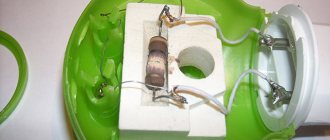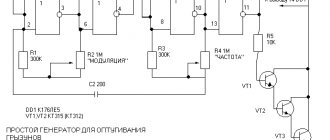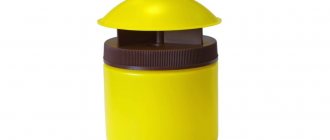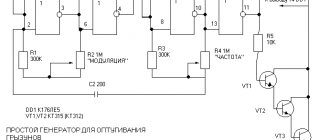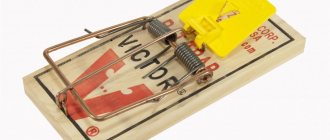Intrusive mosquitoes disturb the sleep of residents of both city apartments and private houses. For those who are used to spending time at the dacha or in a country house, these insects can ruin their vacation. There are many mosquito repellent chemicals on the market. However, not all people can use such sprays, ointments and fumigators.
There are many ways to build a harmless mosquito trap with your own hands. Using simple materials at hand, you can create special devices that can become an alternative to traditional remedies for annoying insects.
Features of homemade structures
When considering options for mosquito traps, you can make several different designs with your own hands. They differ in their operating principle and efficiency. You can create several traps at once, which will become a talisman against insect attacks, and over time, choose the most effective option among those presented below.
All homemade traps take into account the behavioral characteristics of mosquitoes. Insects are attracted to the warmth and smell of sweat, which is secreted by the glands of human skin. Mosquitoes are also attracted to water. Many residents of holiday villages have noticed that in damp areas where there is a body of water nearby, there are much more insects. Mosquitoes also react to carbon dioxide that people exhale.
Various available materials, which are usually available in any home, will help create an effective remedy that can protect against the bites and irritating buzzing of these harmful insects.
Required materials and tools
To assemble an insect killer trap, you do not need complex tools, laser cutters, machines or other expensive equipment. To make such a device you will need the following (inexpensive, probably present in every home) components:
- soldering iron (it is advisable to use it, but the wires can be twisted together manually, but this may result in a break or lack of contact);
- 12V power supply (any cheap power supply will do);
- an ordinary fan used to cool PC cases (you must use a cooler to cool a personal computer that has a built-in backlight);
- a mesh bag (you can use a regular aquarium filter bag);
- short length wires;
- stick;
- glue.
If you plan to install such a homemade trap on metal surfaces, then you will need to additionally purchase several magnets. The process of manufacturing such a device for killing insects does not require the user to have special knowledge and skills. Also, the process of creating your own mosquito killer will not take much time.
Adhesive tape
Using simple improvised means that you have on hand, you can make a homemade mosquito trap. You can create an effective, reliable product with your own hands. To do this, you need to prepare castor oil, rosin, turpentine, water and sugar. You will also need pieces of cardboard or thick paper.
First, a solution is prepared that will attract mosquitoes with its smell. Three tablespoons of sugar are diluted in five tablespoons of water. The composition must be brought to a boil. Stirring with a spoon, wait until it thickens. Next, 100 g of castor oil, rosin and 50 g of turpentine are added to the solution. When a homogeneous mass is obtained, it is applied to strips of cardboard.
Such a trap can be hung near where people are. The smell attracts mosquitoes, which will stick to the surface. When there is no free space left on the paper, you need to hang another strip. The presented trap changes once a week. Pine resin, flax oil, beeswax and honey can be used as impregnation for cardboard.
Homemade sticky bait
Adhesive tapes are an effective repellent against mosquitoes and flies. These traps can be made at home, so there is no need to buy them in a store. First you need to take care of the components for the viscous mass. It is applied to paper or fabric tapes. The glue is made from several ingredients:
| Recipe 1 | Recipe 2 | Recipe 3 |
|
|
|
Materials for a trap can be found in any home. It is made from:
- Cardboard sleeve. It can be removed from a roll of toilet paper or paper napkins.
- Thick paper. Thin ones get wet faster.
- Threads.
The trap looks like a regular roll. It is made according to the following method:
- Cut a long strip of thick paper (preferably from a sheet of wallpaper).
- Wrap it around a cardboard sleeve to make a roll.
- Prepare the glue. Ingredients from any recipe are mixed together. Next, they need to be heated in steam.
- Pull a small piece of tape from the sleeve, lubricating it with glue.
- The trap is installed in the place of greatest concentration of insects.
- When the sticky area is filled with them, it is torn off and a new one is lubricated.
- How to withdraw money from a Qiwi wallet in cash
- Should pensioners pay land tax - exemptions and benefits
- What causes a stroke
Adhesive tape can also be made in a simplified form. Ribbons cut from a sheet of thick paper are lubricated with one of these baits:
- rosin;
- turpentine;
- Castor oil;
- jam.
Next, the traps are hung with clothespins on clotheslines. When the tape becomes full of insects, it is simply replaced with a new one. You need to prepare and use sticky baits carefully. These mixtures are difficult to wash even from the skin, not to mention clothes. The second disadvantage of such traps is their fragility. Natural ingredients do not last as long as their chemical counterparts.
Plastic bottle trap
When considering options for making a mosquito trap with your own hands, you should pay attention to one of the most popular methods. To implement it you will need a regular plastic bottle. It can have a capacity of 1.5-2.0 liters. Plastic containers are widely used for making various decorations and useful devices. You can also protect yourself from mosquitoes with their help.
The design of this trap is quite simple. In addition to the bottle, you will need yeast and sugar. In this case, insects will be attracted by the smell of carbon dioxide, which is released by sugar and yeast.
The bottle must be cut crosswise using a stationery knife. The upper part (where the neck remains) should be 1/3 of the total length. The cover should be removed. With the neck forward, the upper part of the bottle is installed in the lower section. The joint must be sealed with tape.
BOTTLE MOSQUITO TRAP
To catch flying insects you don’t have to invent an unprecedented design. Usually even one plastic bottle is enough. But we decided that the design of two bottles would be much more functional and could be used without problems all summer long. We recommend taking two-liter bottles. Cut off the bottom third of the first bottle. Cut off the top third of the second bottle and insert it upside down into the first bottle. You should end up with a simple design like the one in the picture.
Also make sure that the structure can be hung in places where unwanted insects accumulate, for example, in the garden. To do this, make holes in the first bottle for hooks or thread. Although it will be possible to place the structure in another vessel if you are satisfied with this option.
Preparing the bait
Reviews of a DIY mosquito trap made from a bottle indicate its high efficiency. After making the main structure, you need to make a bait.
Take 0.5 cups of water. Its temperature should be about 30ºС. Next, you need to dissolve 100 g of sugar in it. Then 5 g of yeast is added to the solution. Any type of them can be used. When the ingredients are well mixed, they are poured into the bottom of the bottle. The edges of the neck should not reach the surface of the sweet liquid.
It is better to use a bottle made of dark plastic. You can wrap it in foil to prevent mosquitoes from being repelled by the bright light. During the fermentation process, heat and carbon dioxide are released. Mosquitoes will fly into the bottle. They can no longer get back out. After a few days, the bait needs to be replaced.
How to make such a mosquito trap using carbon dioxide?
Don’t worry, we don’t need any carbon dioxide in its pure form, much less cans of it. Everything will be much easier.
Preparing a plastic bottle
To begin with, take any plastic bottle, of course its size should not be 0.5. It’s better to take a two-liter bottle, or even two and a half. It will need to be cut. And it should be cut so that later the neck, which we will insert into the main part with water already poured into it, does not reach the level of this water by about a centimeter or half a centimeter. Look, this place is indicated in the picture. When you cut the bottle, you will get two components. Its upper part will be a kind of funnel, and the lower part will be the main container for our homemade trap.
Preparing the bait
After we have almost completed the technical part, let's prepare bait for the mosquitoes to fly to. It is made from warm water (which we pour into our homemade container), a little sugar and plus yeast. You should not take hot water; its temperature should be no more than 40 degrees. If the temperature of the water you poured is higher, then the fermentation of the yeast will simply stop, and if you pour water at a temperature of more than 50 degrees, your yeast will die altogether.
So, we poured water (200 ml), now stir granulated sugar in it thoroughly. 50 grams will be enough. And the last component that we add to this sweet water is baker's yeast. You only need one gram of such yeast, one bag or, if measured with a teaspoon, then a quarter of it.
When we mix these simple components, it all begins to ferment. During such fermentation, carbon dioxide will be released. And this is what attracts insects to the trap. Mosquitoes very readily fly to this smell, get inside the bottle and are unable to get out.
Installing a trap
Next, we install the trap as shown in the figure, that is, we turn the upper part (“funnel”) upside down and then simply insert it into the main container. That's it, the trap is almost ready. For best efficiency, use dark paper or any dark fabric to darken the entire structure. It is the darkness with carbon dioxide that is attractive to mosquitoes. You will see this for yourself when you remove the darkening in a week. We do this exactly after a week to replace the entire contents of the bottle. In the future, the bait change interval will be the same.
What attracts mosquitoes?
In addition to carbon dioxide, which attracts mosquitoes, during fermentation, sugar slowly turns into alcohol, and heat is also released here, which is also very attractive to mosquitoes.
Sometimes it happens that the yeast produces foam during the fermentation process. If this is exactly what happened to you, then do not forget to clean it periodically. After all, if you don’t remove such foam, it will simply block the neck, which will reduce the effectiveness of your trap, because access to the inside for insects will be blocked.
Pros and cons of such a homemade mosquito trap
If we compare such a homemade trap with an electrical or mechanical one, then it wins over them in the absence of any noise. But it also has a drawback, because when the yeast ferments, not everyone likes the smell (if anyone likes it at all).
One more time to use such a trap. Here you can replace this bait with simple sugar syrup or leftover jam. Then other unwanted guests, such as flies or wasps, may be attracted to these “goodies”.
If you don’t understand something from the description, you can watch this video. Everything is shown very well here.
Simple design
To make a mosquito trap (without yeast) with your own hands, you can use another simple recipe. To do this, you will need to purchase special insect repellent glue. They use it to treat a piece of gauze. The canvas, impregnated with the presented composition, is stretched over the openings of the ventilation shaft. You can also hang gauze near windows.
Another simple method is to use an ultraviolet light bulb. Such a device must have a power of 20 W. It is placed in a metal mesh frame. The grid is connected to the current. To ensure the safe operation of the presented product, the structure is hidden in a special case in the form of a mesh. The bait should be installed in a place inaccessible to children and animals.
Ultraviolet radiation is attractive to mosquitoes. They will fall on the electrical grid. This is an effective remedy in the fight against mosquitoes. The trap can become a source of soft illumination in the evening, complementing the main lighting indoors or outdoors.
Electric trap
If you wish, you can make your own electric mosquito trap. This device will be an effective tool in the fight against annoying insects. The master must have certain knowledge in electrical engineering. To manufacture such a system, you will need a high-voltage module, a diode lamp and AA batteries.
First you need to disassemble the light bulb. This is done very carefully so as not to damage the internal parts. Next you need to drill two holes in it. Regular aluminum wire is threaded through them. One edge will need to be fixed. Next, the wire is wound around the light bulb. If there is excess aluminum conductor, it must be cut off with wire cutters.
When carrying out all actions, it is important to follow electrical safety rules. If the master does not have the required qualifications, he should not carry out such actions. Such a device may be unsafe to operate.
Method 3. Electronic trap
Making electronic baits is a rather complex process that requires certain skill and at least minimal knowledge of physics. This detailed step-by-step instruction will help you complete this task without any problems.
- Paper packaging for juice or dairy products;
- Wire (thick);
- A piece of gauze;
- Knife;
- Glue;
- A small fan that runs on batteries (portable or from a car will do);
- A small light bulb or mini flashlight.
- Make a body for the future bait. To do this, cut off the top and bottom of the juice bag.
- Using thick wire, secure a small fan inside. The blades should be positioned so that the air stream flows downwards.
- Cut a round piece of gauze (diameter – 50-70 cm).
- Glue it to the bottom edge of the box. It should look like a bag.
- Move to the top and make two holes on the sides.
- Insert wire into them to create a bow like a bucket.
- Attach a light bulb to this handle. The same wire is suitable for fixing.
- All that remains is to make a loop and secure it to the handle. This part will allow you to hang the trap in any suitable place.
- Turn on a light bulb and fan and place the bait near a door or window.
This device works very simply - attracted by the light of the light bulb, mosquitoes fly closer and immediately fall under the influence of the fan. It sucks the insects into a gauze bag, in which they die.
Completing the build
The same procedure is performed on the other side, where the second hole is drilled. Next, you need to connect one of the electrical terminals of the lamp (original) to the end of the aluminum conductor, which was wound on the surface of the device. To do this, you need to twist the outputs tightly. The other two ends (from the lamp and the aluminum wire) are connected to the high-voltage module. This structural element is additionally connected to the switch. The wires should approach the battery on this side.
A DIY electric mosquito trap must be assembled correctly. You need to put a lamp with a winding on the connected high-voltage module. The wiring on both parts must match. Only in case of their contact will the device work.
After this, the structure is considered assembled. It must be checked carefully before use. If all parts are firmly connected to each other, you can connect the device to the network. It is important to wear protective clothing and rubber gloves.
DIY electric mosquito trap
Such a device requires certain knowledge in electrical engineering. The trap is more difficult to make than Velcro or bait bottles. It is crafted with one of three elements:
- Powersave lamp;
- a special lamp that emits carbon dioxide;
- fan.
Store traps often combine the last two details. The carbon dioxide light bulb attracts insects and they fly to it. Then they are sucked by a fan into a gauze bag. The disadvantage of the device is that mosquitoes are unlikely to die in such conditions. Midges can even get out through the gauze. The assembly of such a trap follows the following instructions:
- Cut off the bottom and top of the milk/juice carton.
- Attach the fan to the bottom of the container. It should push the air down.
- The fan is connected to the wires through which the voltage will be carried.
- Next, a gauze bag is attached to the same lower part.
- The upper part of the bag is equipped with wire to form a handle (bow).
- The lamp socket is screwed to this handle.
- The device is suspended and plugged into the network.
The trap will be more reliable if you use a plastic bottle instead of a cardboard bag. It is important that it has a large diameter (volume 1.5-2 liters). Otherwise, even a warm lamp can melt it. It is made like this:
- The neck of the bottle is cut off.
- A hole is made at the bottom of the container for the lamp socket.
- The lamp is inserted inside the bottle.
- The cut top part is inserted with the neck towards the light source. The result is the same funnel as in the case of a carbon dioxide trap.
- The side walls are wrapped in dark fabric. This will direct the insects directly into the funnel.
A similar trap can be made from a used economy class lamp. It will work even when the general lights are turned off. You will need a high-voltage module, a AA battery and a step-by-step assembly diagram:
- Make 2 holes in the light bulb body.
- Thread soft aluminum wire through them. One end is fixed and it is spirally wound around the lamp. The remainder is removed with pliers.
- The same winding is made through the second hole.
- One of the wire ends of the light bulb is tightly twisted onto a wound aluminum wire.
- The remaining ends from the light bulb and wire are connected to the high-voltage module. The latter is pre-connected to the battery via a switch.
- A light bulb with a high-voltage winding is placed on the connected module.
- The upper part of the catcher is equipped with a wire loop. This way the trap can be hung indoors.
Electric trap operation
When creating a mosquito trap with your own hands, you need to check the device before use. To do this, the device is inspected and the integrity of the systems is determined visually. Then it can be connected to the network. If the lamp lights up, everything works fine, you can install it indoors or outdoors.
Mosquitoes flock to the light emitted by the lamp. At the same time, the room and area should be dark. If there are other light sources, mosquitoes will fly to them. As soon as an insect lands on the surface of a lamp entangled in wire, it will be shocked by an electric current.
It is recommended to install a plastic tray under the lamp. Mosquitoes will fall into it. You can hang the presented catcher. For this purpose, the design provides for a loop. This is an effective remedy. However, when it is working, you cannot leave the lamp unattended. Especially if there are children or animals in the house.
Simple trap
The most effective way to create an insect trap requires a bottle, bait and a thick needle.
The bottle is filled one third full with bait and then closed with a lid. A needle or awl is heated with a lighter and holes are made in the bottle through which midges will penetrate inside.
Despite the apparent simplicity of the design, it is very effective. The midges enter the bottle, attracted by the smell, but cannot get back out. After one week, the trap should be replaced by wrapping it in plastic and discarding it.
Watch the video below on how to make a trap for midges and mosquitoes.
Funnel trap
If you don’t have a thick needle or an awl at hand, you can slightly change the design without detracting from its effectiveness. This DIY bottle midge trap is especially effective when using sticky bait, such as syrup, or any liquid with a sweet or sour aroma.
To create a trap, you need a plastic bottle with a volume of one and a half liters. Using a knife, you need to cut it along the narrowing line, remove the cap from the top and fix it with the neck down into the larger part of the cut bottle. You can use tape for fixation if the structure does not seem strong enough.
Once the bottle is filled with bait, it becomes an effective trap for insects and quickly gets rid of the problem.
Paper funnel
Not only the top of the bottle can be used as a funnel, but also paper, for example, a regular sheet of newspaper folded into a cone. In this case, it is absolutely not necessary to cut the bottle: the cone can also be placed in its neck.
Important! So that the cone hole is small, and there are no cracks or gaps at the location of the bottle neck. You can also use tape for this.
Where to place the trap?
A bottle mosquito trap is convenient because it can be fixed anywhere, placed on a flat surface or hung. If midges live in the entire apartment, it is necessary to make a trap for each room in order to remove all the insects at the same time.
If the bait is chosen correctly and really attracts midges, the location of the structure in the room is of secondary importance. But, nevertheless, it is useful to know the strategically correct zones in the room.
- Doorways – the trap can be placed near them or even hung. The only downside is that a hanging bottle can interfere with the passage.
- Window - the bottle can be placed on the windowsill. But if the window is not protected by a mosquito net, the trap will attract not only insects already present in the room, but also midges and insects from the street.
- Light sources – the trap can be placed under a table lamp or tied to a chandelier. The light will work to attract midges along with the smell of the bait, and, therefore, will increase the likelihood and speed of “catch.”
What to do if the trap doesn't work?
A do-it-yourself midge trap made from a bottle is the simplest and at the same time the most effective way to get rid of insects. If in a particular case it is ineffective, the following circumstances may be the reason for this:
- there are “sources” of penetration of new insects in the room;
- the trap does not cover an area of space.
In the second case, you just need to take a few more bottles, make new traps and place them at different ends of the room.
The second case requires clarification - where do new midges come from? If the reason for this is open windows, you need to install mosquito nets. If midges appear from the sink, you need to fill the water drain with vegetable oil and leave for several hours.
Insects often appear from indoor plants. Therefore, they need to be replanted regularly, changing the soil and treating the pot with boiling water. You also need to eliminate any sources of moisture in the room - a leaking sink, pipe, etc. You should not leave other sources of insect-attracting odors in the room - for example, an open outlet with jam, half an apple or an aromatic sachet will reduce the effectiveness of the trap. Therefore, during the period of “hunting” for midges, it is better to put all food in the refrigerator or sealed jars, special containers, or plastic bags.
In this case, the bottle trap will be effective and will definitely work.
Share your methods of making traps. And watch the video below on how to make a midge trap with your own hands.
Reviews of homemade products
Today there are many safe, harmless to human health and the environment means of mosquito control. All of them are effective when performed correctly. According to reviews from craftsmen, there are indeed significantly fewer mosquitoes. But when using this or that, first of all you need to think about safety.
The methods presented above can be used in turn or all together. Over time, mosquitoes become accustomed to the traps. Therefore, it is recommended to change the devices periodically.
Having considered how to create a mosquito trap, you can make effective devices and products with your own hands from scrap materials.

